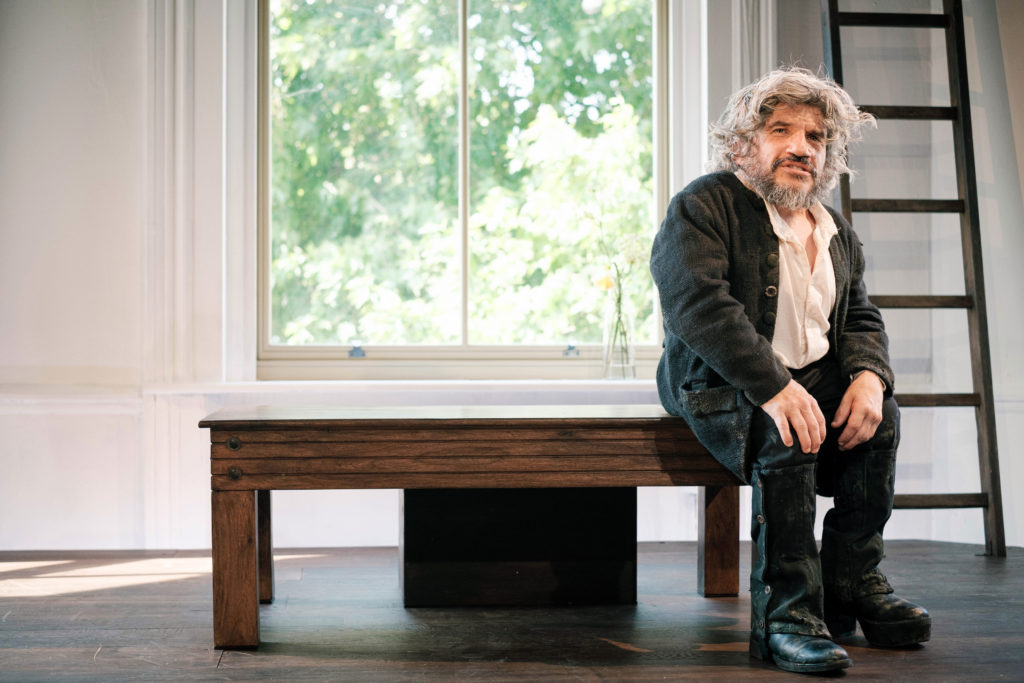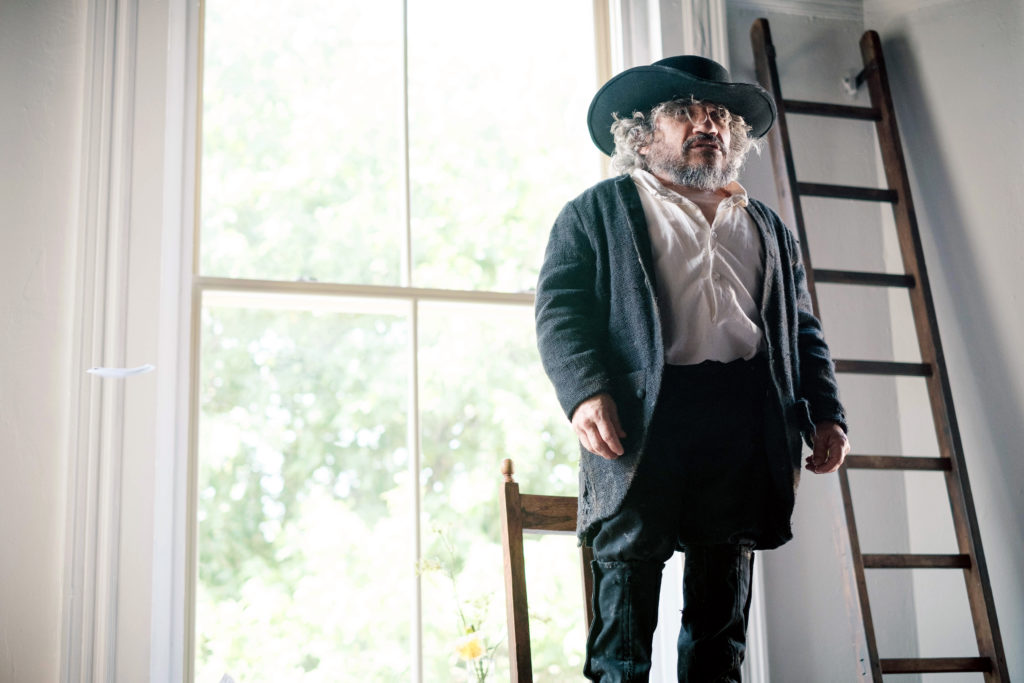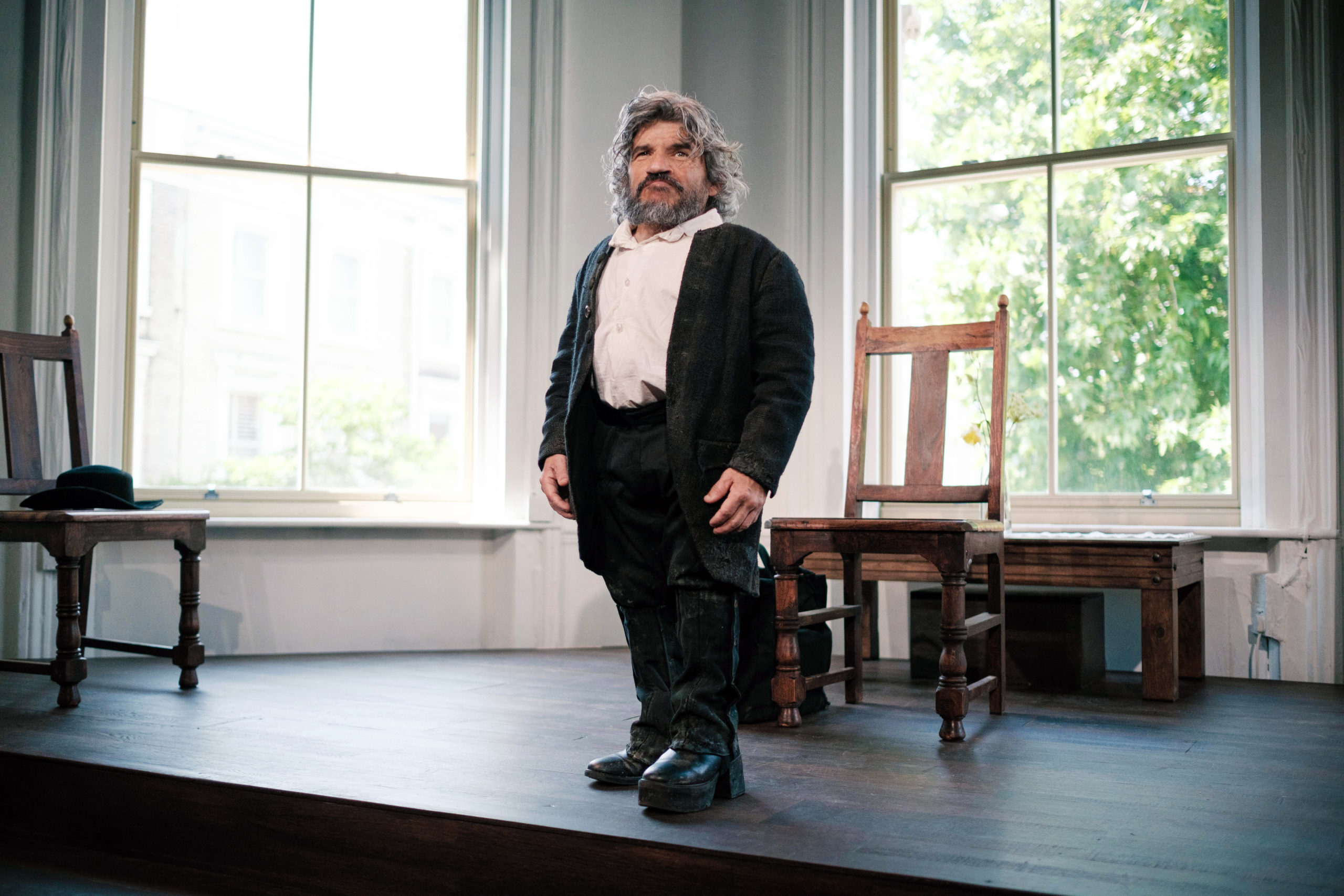The Return Of Benjamin Lay – Finborough Theatre, London
Mark Povinelli brings an overlooked figure from history to life in the world premiere of The Return of Benjamin Lay.

Just Who Is Benjamin Lay?
I don’t recall having been previously to a play co-written with a historian. For me, a historian myself, this was a definite draw. The Return of Benjamin Lay is currently in its world premiere production at the Finborough Theatre. Written by playwright Naomi Wallace and playwright and historian Marcus Rediker, it tells the story of, well, Benjamin Lay. But who is that? Rather an interesting historical figure, as it turns out.
Benjamin Lay was born in 1682 near Colchester, to a Quaker family. A little person, standing just over four feet tall, he worked as a shepherd, a sailor and a farmer. He ran away to sea aged 21, leaving behind an apprenticeship as a glovemaker. On a return voyage to the UK in 1717 he met his future wife, Sarah, in the Quaker meeting house in Deptford (the site of which is still marked today, Tsar Peter the Great also worshipped there).
Once married in 1718, Benjamin and Sarah went to Barbados as merchants. Lay’s first hand experience of the treatment of enslaved Africans in the colony radicalised him against slavery. He became a committed campaigner, much to the annoyance of other Barbados residents who profited handsomely from enslaved labour. And so Benjamin and Sarah emigrated instead to the colony of Pennsylvania, William Penn’s Quaker colony. Lay, now an author of various abolitionist pamphlets, committed himself to an increasingly self-sufficient lifestyle, not wishing to do harm to humans or animals. Tea and sugar were obviously out. But so were meat, leather, cotton, and various other goods. Lay ended his days living in a cave, eating fruits, vegetables and honey and weaving his own linen from flax. He died in 1759.

The Return of Benjamin Lay
A fascinating subject for an evening’s theatre, then. Wallace and Radiker retell the story of Benjamin Lay’s life, under the guise of an unusual meeting. We learn at the outset that Lay has returned from beyond the grave to plead his case with us. No longer an audience, we are transformed all at once into a Quaker meeting. This premise has a solid basis in reality, at least in one sense: Lay was disowned from four different Quaker meetings (congregations) for his inconvenient campaigning, and the last one to posthumously ‘undisown’ him only did so in 2018.
Lay’s story is brought to life as a monologue, acted with real skill and energy by American veteran of stage and screen Mark Povinelli. Povinelli must embody not only Lay but a handful of other characters who pop up in the story, from George II to Benjamin Franklin to an enslaved friend in the Barbados days. It’s an impressive performance, supported by clever design by Riccardo Hernandez, lighting by Anthony Doran and sound by John Leonard. By stripping the Finborough Theatre right back, revealing lovely large windows, the space becomes a credible Quaker meeting house. With minimal props, Povinelli inhabits the full space, even climbing a ladder at one point to evoke a ship’s rigging.
The writing could perhaps have done with a corresponding touch of minimalism. Maybe it’s a result of the period and the language, but it brought to mind moral and episodic early novels, Lay moving from one notable incident to the next in a structure which can start to feel slightly relentless in tone by the close of the play’s 70 minutes. Nonetheless Director Ron Daniels keeps up the energy throughout, and Povinelli finds the moments of tenderness and levity to break up the narrative plot.

Final Thoughts
In the end I enjoyed The Return of Benjamin Lay on two distinct levels. Firstly, the man himself is immensely interesting, and seeing the play has already prompted me to learn more about him. It’s an impressive thing to be a lone voice of dissent and to live so firmly by your convictions. That the tide of general opinion turned eventually in Lay’s favour, with notable Quaker support for Abolition in later years, does not undo the lack of support he experienced in his own time.
Secondly, and this is maybe one for the theatre geeks, I enjoyed the conceit of transforming us into a Quaker meeting. Povinelli frequently breaks the fourth wall (be prepared for some light audience interaction): he addresses us directly, gets help tying on armour, trades sheep impressions with audience members, and even had the Urban Geographer sticking his tongue out. All of this helps us to assume our role, that of Quaker meeting asked to accept Lay back into the fold. Were he just to address us in a monologue for an hour, the effect would be far less naturalistic, despite the supernatural premise of an anti-slavery campaigner returned from the grave.
In summary, The Return of Benjamin Lay is not a perfect play, but it is an interesting one. Along with a strong creative team, Povinelli’s performance elevates a narrative-heavy story into a compelling conversation with a figure from the past. There was a moment towards the end when I felt an overly signposted parallel with Climate Emergency protesters today. But given the ongoing prevalence of slavery and unfair labour practices in our supply chains today, perhaps we would do well to consider Lay’s core messages and example first and foremost.
Salterton Arts Review’s rating: 3.5/5
The Return of Benjamin Lay on until 8 July 2023
If you see this after your page is loaded completely, leafletJS files are missing.

